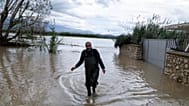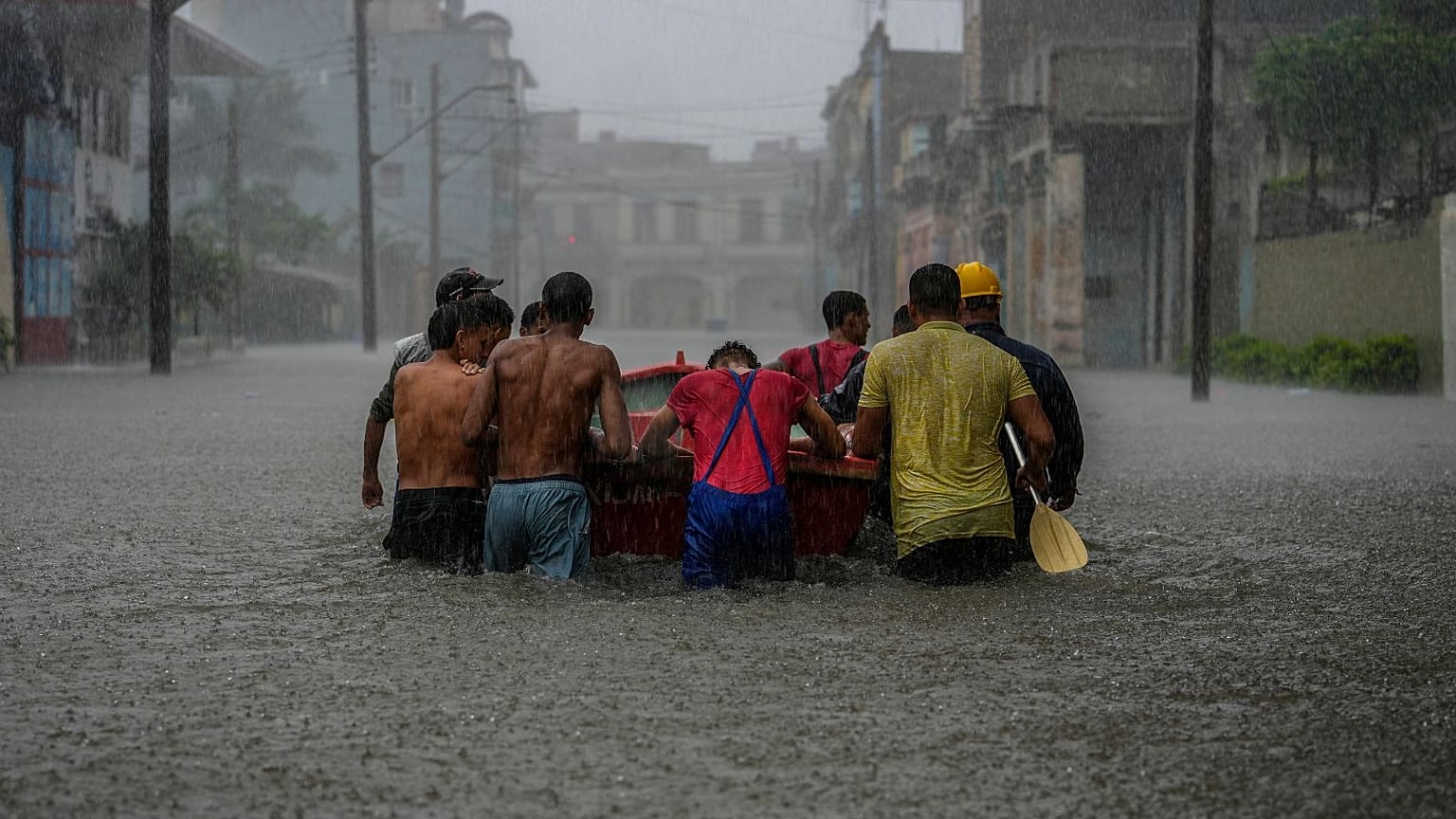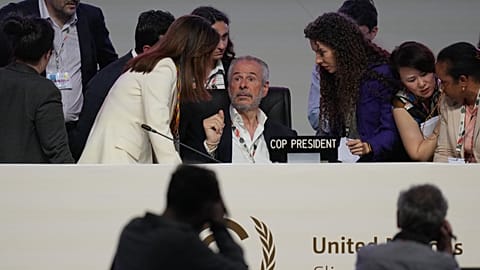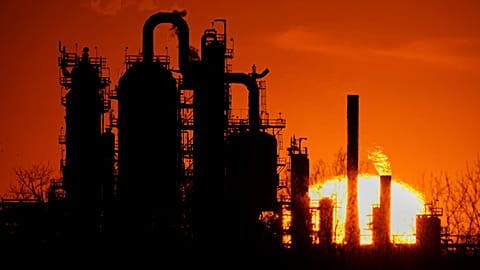G77 and China debated into the early hours on Sunday morning, with loss and damage ending up on the COP27 agenda.
Climate compensation is shaping up to be the defining issue of this year’s UN climate change conference in Egypt.
For more than 30 years, developing countries have been calling for specific funding - known as ‘loss and damage’ - to cope with the disasters that developed countries’ high emissions are wreaking.
Now loss and damage has finally made it onto the agenda at this COP27, in a significant early victory for climate vulnerable nations.
A successful COP could not have been possible without it. But campaigners have made it clear that the words alone do not ensure a meaningful outcome.
What is loss and damage?
Loss and damage refers to the impacts of climate change that are already causing devastation, and which countries can do little to adapt themselves to.
Speaking to Carbon Brief, Professor Saleemul Huq, director of the International Centre for Climate Change and Development (ICCCAD) and an early champion of the concept, describes loss as “things that have been lost completely and won’t come back - like human lives.”
Still reeling from record breaking floods this year, Pakistan provides a stark example of the need for loss and damage funding, with 1,719 lives lost and the repair bill estimated at €40 billion.
What climate finance have developed countries delivered?
So far, climate finance has mainly been divided into mitigation and adaptation funding streams. At the 2009 COP in Copenhagen, developed countries agreed to mobilise $100 billion (€101bn) a year by 2020 to support climate action in developing countries.
They are still failing on this - particularly on the adaptation front which, though intended to make up half of all funding, stands at only 34 per cent (around €29 billion) of the $83 billion (€83bn) total according to the latest UN emissions gap report.
Countries in the global south have made it clear that adaptation (funding for flood defences, for example) cannot slip down the agenda. But the need for money directed to loss and damage is becoming increasingly urgent.
Before COP27 started, AOSIS (the Alliance of Small Island States) deputy chair Ambassador Conrod Hunte told Euronews Green that, “COP27 will be a defining summit for small island developing states particularly on the issue of loss and damage response finance.
“We are at our limit, literally and figuratively. The international community generally agrees that the global financial architecture is failing our islands’ unique vulnerabilities. We are enduring worse and worse impacts beyond our adaptation limits and the gaps are widening. This absolutely must be the COP to move the drawn-out dialogues to decisive action.”
What have COP27 leaders agreed on loss and damage so far?
After heated talks which saw AOSIS and a coalition of 134 developing countries (the G77) plus China debating into the early hours of Sunday morning, loss and damage is in black and white on the final agenda.
Government negotiators have agreed to launch talks on “matters relating to funding arrangements responding to loss and damage associated with the adverse effects of climate change.” This, they say, is "with a view to adopting a conclusive decision no later than 2024".
"We do not want to be here, demanding finance for our loss and damage response. We do not want to be treated as though you are doing us a favour by adding an agenda item or creating a voluntary fund," Ambassador Hunte said in response.
Climate Action Network International (CAN), an environmental network of more than 1,900 civil society groups, has stressed that the timeline to set up a loss and damage finance facility cannot be delayed until 2024.
So what is needed to really progress on this vital issue?
How can COP27 succeed on loss and damage?
“Loss and Damage finance: No time to sit back and relax!” runs the headline of the ECO newsletter, the voice of CAN and other NGOs at COP.
To avoid ending up with an “empty shell” once again, they say it is crucial to get a decision by the end of the two week summit on establishing a new ‘facility’ for loss and damage.
Developing nations made it clear at COP26 in Glasgow that they want this facility to be a fund paid by large emitters, channeling grants rather than loans which will land them in more debt.
“There are many options for additional finance, starting with looking at the worst polluters via a climate damages tax or a windfall tax on the outrageous profits that fossil fuel companies are hauling in this year,” adds the ECO report.
UN Secretary-General Antonio Guterres has been a passionate proponent of this approach too. “I am asking that all governments tax the windfall profits of fossil fuel companies,” he said during the World Leaders Summit today. “Let’s redirect the money to people struggling with rising food and energy prices and to countries suffering loss and damage caused by the climate crisis.”
New analysis from Global Justice Now points out that the Big 5 oil companies (including BP and Shell) announced over $170 billion in profits in 2022. “To put this into perspective, that is more than the $116 billion a year that loss and damage are estimated to cost the global south, to date.”
A polluter tax is one popular proposal among many for footing the climate ‘reparations’ bill. But it’s important to note that loss and damage has been signposted in the COP process for years, though richer countries keep blocking the path.
Now, at this ‘implementation COP’, loss and damage advocates want to activate some of the dormant parts of past agreements. These include the Warsaw International Mechanism for Loss and Damage associated with Climate Change Impacts (WIM) and the Santiago Network on Loss and Damage.
A statement from AOSIS indicates that these institutions should be properly financed and resourced to achieve their mission.
“We cannot claim to be tackling the climate crisis if we kick the can down the road on issues like loss and damage,” comments Mohamed Adow, founder and director of PowerShift Africa. “We're in the continent where loss and damage is a reality.”
“It's not too late for this COP to deliver for Africa and the developing world where other conferences have failed them. But we can no longer dodge this vital issue."
“The Global South must unite behind the decision to set up a loss and damage finance facility,” adds executive director of CAN-International Tasneem Essop. “We are not yet defeated.”



















